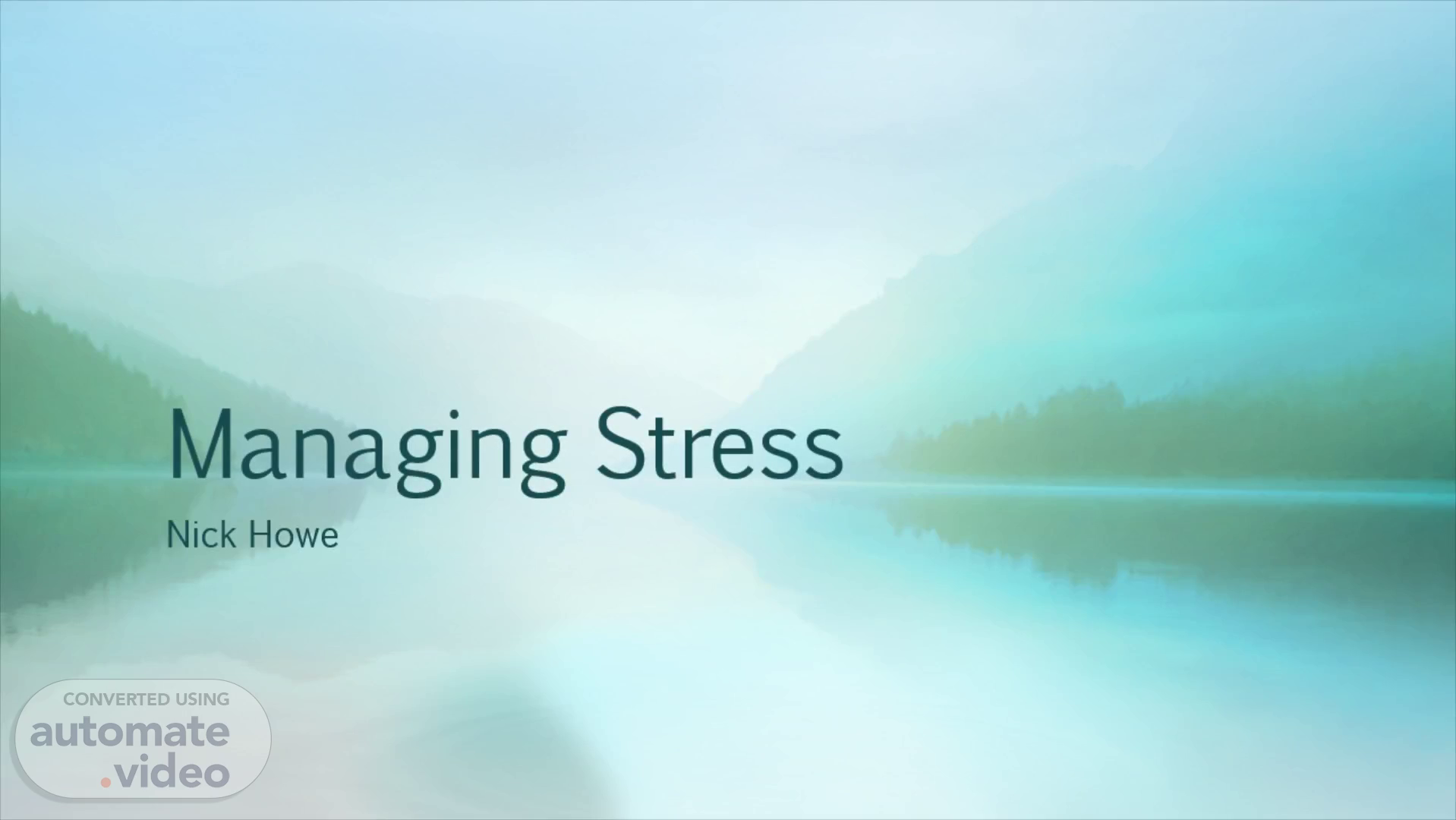Scene 1 (0s)
Managing Stress. Nick Howe.
Scene 2 (6s)
What is stress?. Stress is defined as a disturbance in an individuals physical and/or emotional state due to a real or perceived threat, aggravation or excitement that disturbs the persons “normal” physiological state and to which the body must try to adapt..
Scene 3 (21s)
Types of Stress. Stressors can be anything physical that disrupts your body’s “normal” state Physical Lifting something too heavy Uncomfortable clothing Emotional Anxiety about a presentation for a class Phobias.
Scene 4 (33s)
Types of harm stress can do to your body. Weight gain Loss of hair Skin problems Diabetes Digestive problems Loss of libido.
Scene 5 (45s)
Stress Management. One way to alleviate stress is by using relaxation breathing. Relaxation breathing starts by inhaling deeply and rhythmically and involving the abdominal muscles. When tense, we often have shallow breathing in the upper chest or even hold our breath, but this kind of breathing can increase anxiety. Relaxation breathing can help relieve tension and increase oxygen levels in the blood. In turn, this can boost energy and sharpen thinking. Relaxation breathing is easy and can be done sitting or lying down, alone or in a small group, and for a few minutes or longer. The object is to expand the lungs fully by drawing downward with the diaphragm and outward with the abdomen, then releasing fully..
Scene 6 (1m 17s)
4 – 7 – 8 Breathing Technique. To practice 4-7-8 breathing, find a place to sit or lie down comfortably. Be sure you practice good posture, especially when starting out. You can also use this technique if you are having trouble falling and staying asleep, so if you’re using this method to fall asleep, lying down is best. Prepare for the practice by resting the tip of your tongue against the roof of your mouth, right behind your top front teeth. You’ll need to keep your tongue in place throughout the practice. It takes practice to keep from moving your tongue when you exhale. Exhaling during 4-7-8 breathing can be easier for some people when they purse their lips. The held breath (for seven seconds) is the most critical part of this practice. It’s also recommended that you only practice 4-7-8 breathing for four breaths when you’re first starting out. You can gradually work your way up to eight full breaths. This breathing technique shouldn’t be practiced in a setting where you’re not prepared to fully relax. While it doesn’t necessarily have to be used for falling asleep, it can still put the practitioner into a state of deep relaxation. Make sure you don’t need to be fully alert immediately after practicing your breathing cycles.
Scene 7 (2m 11s)
Let’s practice. T he following steps should all be carried out in the cycle of one breath: First, let your lip's part. Make a whooshing sound, exhaling completely through your mouth. Next, close your lips, inhaling silently through your nose as you count to four in your head. Then, for seven seconds, hold your breath. Make another whooshing exhale from your mouth for eight seconds. When you inhale again, you initiate a new cycle of breath. Practice this pattern for four full breaths..
Scene 8 (2m 37s)
THANK YOU FOR YOUR VISIT! – Lemorau.
